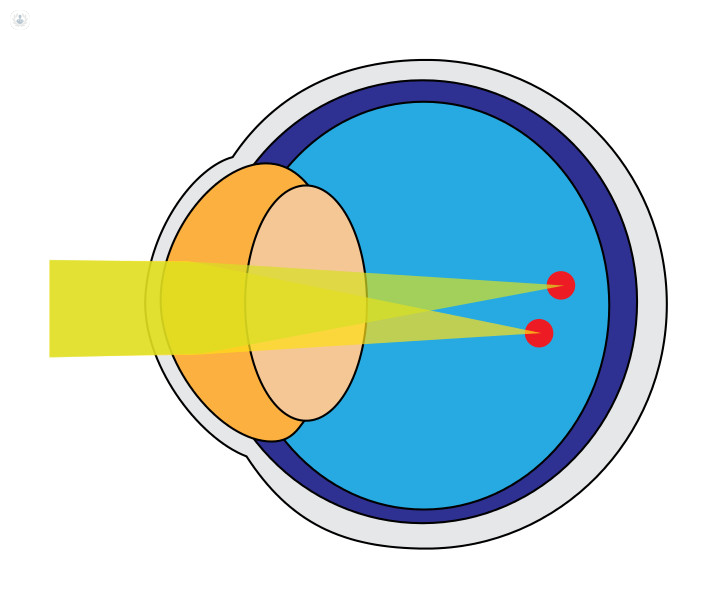


What is astigmatism?
Astigmatism is a condition where the shape of your eye is more like a rugby ball than a football, causing blurriness in vision.
People with astigmatism are generally born with it, but sometimes the condition can develop as the result of surgery, injury, or an illness. Astigmatism usually comes with long- or short-sightedness.
Astigmatism is very common – nearly 50% of people in the UK who wear glasses have some form of astigmatism.
What are the causes of astigmatism?
Astigmatism occurs when the curvature of the surfaces on your eye are irregular, resulting in a refractive error.
Your eye has two curved surfaces – the cornea and the lens – which bend, or refract, light. In a perfectly functioning eye, both the cornea and lens have two curves that match each other, resulting in a sharp image. However, if the curves are mismatched in either the cornea or lens, your retina will receive a blurry image. A fault in the cornea is called corneal astigmatism while a fault in the lens is called lenticular astigmatism.
Both of these types come under the bracket of regular astigmatism, which is by far the most common form of astigmatism. Irregular astigmatism involves a cornea or lens which is curved in multiple directions, curved asymmetrically, or uneven in other ways. It is much more difficult to correct and not usually possible to correct with eyeglasses. However, irregular astigmatism occurs much more rarely than the regular form, and is usually the result of an injury to the eye or illness. The rest of this article focuses on regular astigmatism.
Symptoms of astigmatism
The main symptom of astigmatism is blurry vision, which can come with:
- headache
- eye strain (especially from reading or looking at a computer for a long period of time)
- squinting
Medical tests to diagnose astigmatism
Astigmatism, along with long- and short-sightedness, can be diagnosed by an optician during a comprehensive eye exam. The doctor will be able to determine from this what degree of astigmatism you have, and therefore what your corrective options are.
Treatments for astigmatism
Astigmatism can usually be corrected with eyeglasses or contact lenses. Both involve the use of artificial lenses to give you clear vision. From your eye exam the optician will produce a prescription, which states what kind of lens you need.
Previously it was not possible to buy soft contact lenses for astigmatism, and the only option was the use of rigid lenses. Now, however, a special form of soft lens called ‘toric’ lenses are available.
For stronger forms of astigmatism the cost of contact lenses can increase, and the range of frames you can wear may be restricted.
If you opt for eyeglasses or contact lenses, it is important to have your eyes regularly tested because the shape of your eyes change gradually over time, and your prescription might change.
Finally, laser eye surgery is often an option, but can be more expensive and may carry the risk of complication.
